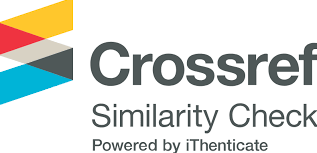Assessing status and potential of Acacia crassicarpa development in sandy area of Quang Tri province coastal zones
Keywords:
Acacia crassicarpa,, coastal sandy soil, development potential, the appropriate levelAbstract
Sandy area of Quang Tri province coastal r egions has the area of about
34,152ha, accounting for 7.2% of the natural one of the province, in which
white golden sand dune and sand beach (Cc) area is 21,089ha, accounting
for 61.8%; sandy soil area is 10.410ha, accounting for 30.5%; golden sand dune (Cv) area is 2,647ha, accounting for 7.8% and riverside sand (Cb) area is 5.4ha, accounting for 0.02% the total area of sand, sand dune and sandy beach zones. Sandy areas located in 25 coastal communes of 4 provinces Vinh Linh, Do Linh, Trieu Phong and Hai Lang. The area of uncultivated sandy zones is relatively large, accounting for 29.3% (10,020ha) of the total area of the province’s coastal sandy zones. The area of forests for windbreak and sandbreak is 16,428ha, Acacia auriculiformis and Casuarina equisetifolia are mainly planted on white sand type, shifting sand dunes so they poorly grow and has low capacity of protection. A trial of Acacia crassicarpa to grow in the interior - field sand area has been carried out since 2000, so far 23ha of Acacia
crassicarpa has been planted, in which 17ha in Trieu Phong and 6 ha in Gio Linh. Acacia crassicarpa has been well grown and developed, the survival rate after 27 months is over 90.0%. The tree height and stem diameter is significantly correlated by the equation: Hvn = 0.109 + 0.365*Dgoc (R = 0.69, p - value < 2.2e - 16). Based on the identification of key factors affectiing the plant growth and development and production potential when planted in coastal sandey region, the research has evaluated that the development potential of Acacia Crassicarpa for reforestation in coastal sandey region of Quang Tri is relatively hight, the appropriate medium level (S2) for Acacia crassicarpa mainly on golden white sand (Cc), about 21,089ha and golden sand (Cv), about 2,647ha
References
1. Lê Thanh Bồn, 1998. Thành phần và một số đặc điểm của nguyên tố lân ở đất cát biển. Tạp chí Khoa học đất. Số 10, tr. 54 - 62.
2. Tôn Thất Chiểu, Lê Thái Bạt, 1998. Nghiên cứu phân loại đất vùng Duyên hải miền Trung (thực hiện mô hình toàn tỉnh Bình Định). Tạp chí Khoa học Đất. Số 10, tr. 39 - 46
3. Nguyễn Thị Liệu, 2015. Kỹ thuật lên líp, bón phân và mật độ thích hợp trồng rừng Keo lá liềm trên đất cát nội đồng vùng Bắc Trung bộ. Quyết định số 194a/QĐ-TCLN-KH&HTQT ngày 05/5/2015 của Tổng cục trưởng Tổng cục Lâm nghiệp.
4. Thái Văn Trừng, 1998. Những hệ sinh thái rừng nhiệt đới ở Việt Nam. Nxb Khoa học và Kỹ thuật, Hà Nội, 1998.
5. Đặng Văn Thuyết, Triệu Thái Hưng, Nguyễn Thanh Đạm, 2005. Nghiên cứu xác định mô hình rừng phòng hộ trên cát di động ở ven biển tỉnh Quảng Bình. Báo cáo tổng kết đề tài cấp Bộ. Viện Khoa học Lâm nghiệp Việt Nam.
6. Nguyễn Văn Tuấn, 2014. Phân tích số liệu với R. Nxb Tổng hợp TP HCM. 2014.
7. Lê Đức Thắng, Ngô Đình Quế, Lê Tất Khương, Nguyễn Đắc Bình Minh, Phạm Văn Ngân, 2015. Ảnh hưởng của phân bón, chất giữ ẩm đến sinh trưởng cây Keo lá liềm (Acacia crassicarpa A. Cunn ex Benth) ở chu kỳ 2 trên đất cát ven biển tại Hà Tĩnh. Tạp chí Nông nghiệp và Phát triển nông thôn, (23), kỳ 1, tháng 12/2015, tr. 117 - 124.








